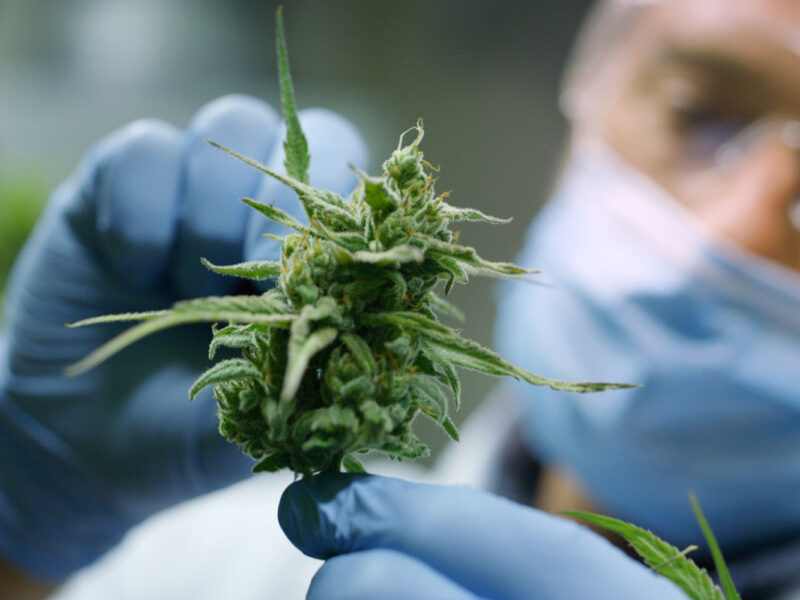To discern CBD flower from weed, observe THC content and psychoactive effects. CBD flower has high CBD and low THC levels, producing minimal psychoactive impact.
Navigating the world of cannabis can be like wading through an ever-expanding sea of terminology and products. Enter the realm of CBD flower and weed—two substances derived from the cannabis plant yet distinct in their properties and uses. CBD flower, often synonymous with hemp, boasts high cannabidiol (CBD) content, the non-intoxicating compound praised for its therapeutic benefits.
Conversely, what many refer to as “weed” typically contains higher levels of tetrahydrocannabinol (THC), the primary psychoactive constituent responsible for the “high” sensation. Understanding the balance between these compounds is key for choosing the appropriate product for medical relief, relaxation, or recreational purposes. With the rise of CBD’s popularity for its potential health benefits, distinguishing it from its psychoactive cousin is essential.

Credit: greenunicornfarms.com
Introduction To Cbd Flower And Weed
CBD flower and weed often get mixed up. The main difference lies in their chemical composition. CBD, or cannabidiol, dominates in the CBD flower. THC, or tetrahydrocannabinol, is the main part of weed. THC is what makes people feel “high”. CBD does not cause this feeling.
Let’s talk about the legal side of these plants. Many places allow CBD flower. It has low amounts of THC, usually less than 0.3%. Weed, with high THC levels, remains illegal in various areas. Knowing the THC content is key. It sets apart the allowed from the not allowed. Always check your local laws before buying.
Credit: bonata.com
Physical Appearance
CBD flower and weed often differ visually. The color of CBD flower tends to be more varied, with shades of green mixing with oranges or purples. On the other hand, weed, specifically THC-rich varieties, usually has a consistent green hue. The presence of trichomes, which are the tiny crystal-like hairs, can also indicate quality. Abundant trichomes that sparkle signify high cannabinoid content. CBD flower structure is often less dense and more leafy, while weed may appear more tightly packed and trimmed.
Aromatic Differences
The smell of CBD flower and weed is different. CBD flower usually has a gentler aroma. Weed often smells stronger. This is due to terpenes, which are scent compounds.
| CBD Flower | Weed |
|---|---|
| Light, floral scent | Skunky, pungent odor |
| Less intense nose-sting | Strong, distinctive nose-sting |
| Subtle herbal notes | Bold, earthy notes |
These terpene profiles affect how we feel about the smell. Each plant’s smell is unique. Some CBD flowers might smell fruity or sweet. Weed often has a heavy scent that lingers in the air.
Chemical Signature
Distinguishing CBD flower from weed often involves lab testing. Tests check for cannabinoids, the active chemicals. THC levels are higher in weed. CBD flower usually has more CBD and less THC. Labs use advanced equipment to detect these compounds.
Test results show the chemical makeup. They help us understand what we have. The key is THC content. Rules say it should be below 0.3% for CBD products. Anything above that is likely weed. Tests also show other cannabinoids, like CBD, CBN, and CBG.
| Cannabinoid | CBD Flower | Weed |
|---|---|---|
| THC (<0.3%) | Low | High |
| CBD | High | Varies |
Psychoactive Effects
Understanding the difference between CBD flower and weed is quite straightforward. CBD flowers are bred to contain high levels of cannabidiol (CBD) and minimal amounts of tetrahydrocannabinol (THC). This means they do not produce the psychoactive ‘high’ associated with weed. Specifically, CBD’s effects tend to be more calming and soothing. Users often report a sense of relaxation without any impairment of their mental state.
On the other hand, weed, commonly rich in THC, directly affects the brain’s endocannabinoid receptors. This action induces the classic psychoactive experience. Euphoria, altered sense of time, and enhanced sensory perception are typical THC-induced effects. To identify CBD flower, look for certificates of analysis and lab reports confirming THC content below 0.3%.
Legal Implications And Access
The regulation status of CBD flower and weed varies greatly across different regions. In some U.S. states, CBD flower is legal due to its low THC levels, which is the compound that makes you feel high. On the other hand, weed, generally high in THC, remains illegal in many places. Checking your local laws is crucial before purchasing.
Buying CBD and weed also depends on where you live. Areas with legalized marijuana might offer these products in dispensaries. For regions where only CBD is legal, health stores or specialized online retailers are common purchasing spots. Always look for credible sellers to ensure product quality and legality.

Credit: www.botanyfarms.com
Conclusion
Distinguishing CBD flower from its THC-laden counterpart is straightforward with the right know-how. Keep an eye out for legal labels, smell profiles, and lab reports. For the uninitiated, the challenge may seem daunting, but with these tips, anyone can become adept.
Remember, proper identification ensures a safe and compliant experience. Stay informed, stay legal, and enjoy responsibly.

